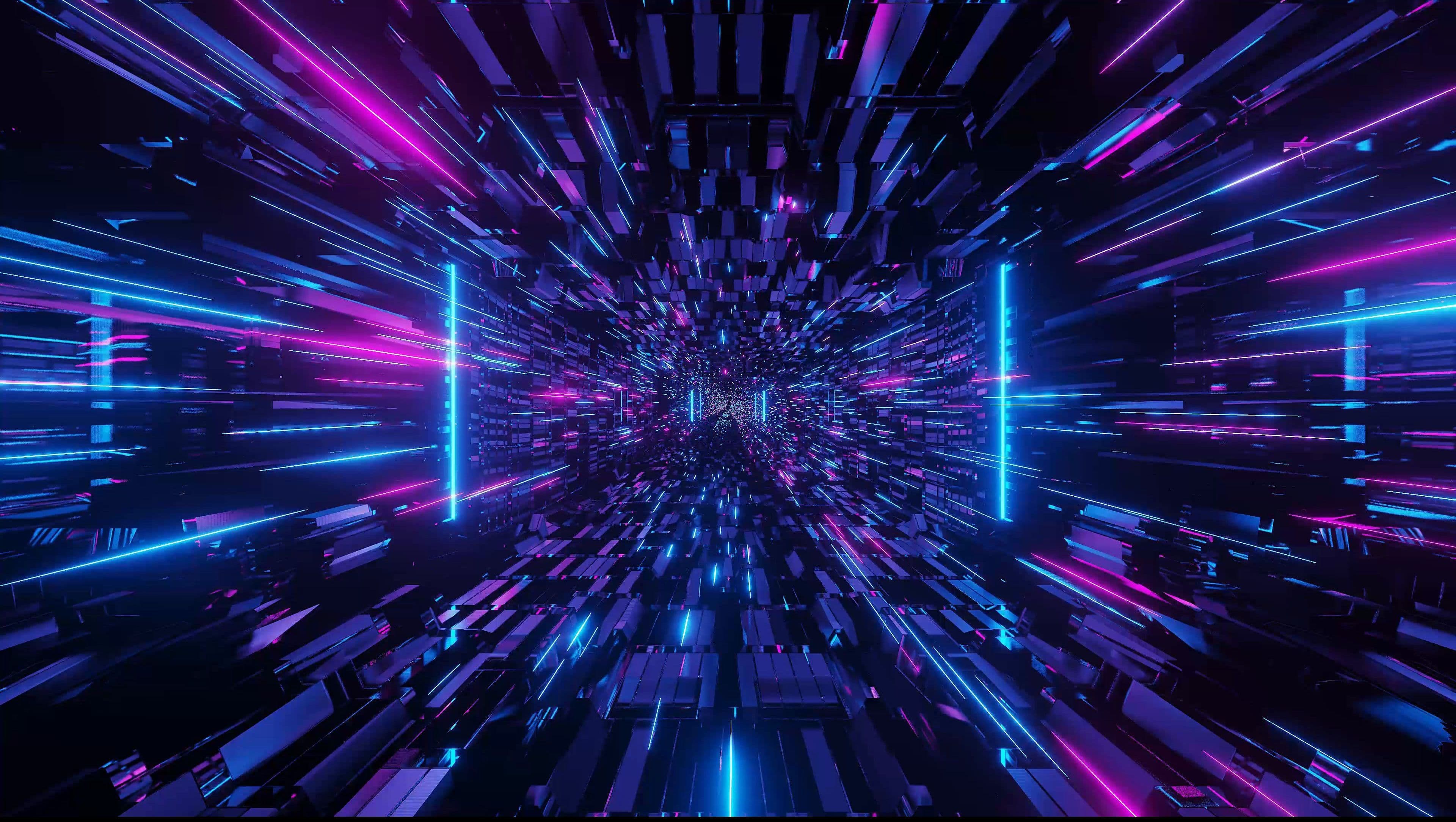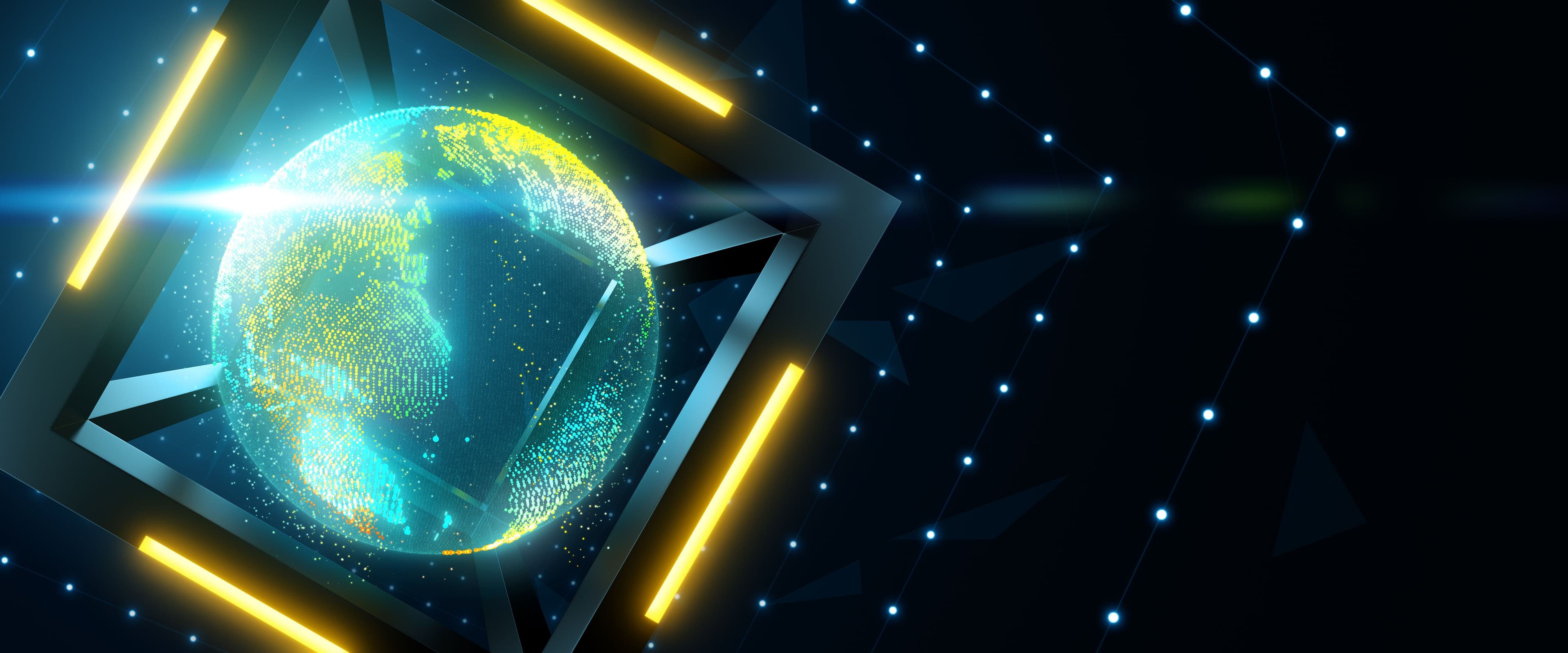As we all know, the famous Gamechanger conference was held on Thursday, October 12 in Zagreb. There were a lot of visitors from not only the entire Balkan region but from all over the world. Through insightful discussions and panels, not only did it address existing uncertainties but also sparked new dialogues about the evolving digital frontier Web3 world.
The topics discussed in the panels were related to AI and the Gaming industry, and its impact on other industries such as advertising and e-commerce. With that in mind, let's get down to today's topic - what's new in these industries and how it will affect our future.
How Are VR & AR Changing the World of Gaming?
At the beginning of the panel titled ‘VR solutions in the gaming world’, VR (Virtual Reality) and AR (Augmented Reality) concepts were defined.
VR is a digital simulation where users are fully immersed in a computer-generated environment using headsets and often controllers, and it is mainly used in gaming, training simulations, virtual tourism, and more.
On the other hand, AR enhances the real world by overlaying it with computer-generated content, accessible through devices like smartphones or glasses, and it is commonly used in applications including mobile games, navigation, and virtual product try-ons.
A noteworthy difference between VR and traditional gaming was highlighted through sales data. The best-selling VR game reached 2 million sales, whereas a non-VR game ranked 50th in sales numbers and has been sold 14.5 million times. This difference indicates the commercial challenges VR faces. Many believe that while VR remains an expensive endeavor for developers, AR is seen as the future of gaming.
One of the barriers to VR's mass adoption is its cost and unfamiliarity associated with its hardware. Investing in a VR set is a significant expense, and a portion of potential users don't fully understand its workings or haven't had the opportunity to try it before purchasing.
Additionally, the hardware involved, including the headset and related equipment, is often complicated to use and uncomfortable. Some users even report feelings of dizziness and nausea while using VR.
In contrast, AR is beginning to expand. AR could be considered as the interaction between real-world objects and 3D models. An example of AR is the filters we use on platforms like Instagram and Snapchat. One of the most anticipated AR tools is Simulon, which, though still in its beta development phase, promises unmatched realism.
The recent collaboration between Meta and RayBan marked a new era of AR glasses. These glasses are not only more affordable than Apple's but also have intriguing features, making them comfortable and convenient for everyday wear. There are plans to integrate AR glasses with platforms like Adobe and Photoshop in the future, as a way to seamlessly integrate AR into our creative processes.
It seems that the future of gaming, while still in development, leans more towards AR than VR. According to what we have heard, the ideal device is light, convenient to wear, and can replace all functionalities of a smartphone. If AR can achieve this, then it would have truly reached its zenith.
How Are Blockchain & NFTs Changing Games? Is Play to Earn Dead?
One of the most discussed topics during the conference was the role of blockchain and NFTs in modern gaming.
Participants agreed in their view that the "Play to earn" model is not sustainable in the gaming world. This model, which integrates prizes directly into gameplay, tends to excessively focus on the economic aspect, causing the core gaming philosophy to be overshadowed. This has led many in the gaming community to be careful, with a noticeable distance growing towards anything blockchain-related.
According to the gaming community, those involved in NFT gaming are not considered 'real' gamers. Instead, they are viewed as 'profiteers', more interested in capitalizing on the financial prospects of NFTs rather than having a passion for gaming. This narrative creates a division between traditional gamers and those who enjoy the NFT gaming landscape.
On the other hand, the current capabilities of blockchain are yet to meet the demanding standards of the gaming industry, as there are challenges related to scalability, transaction speeds, and user experience that need to be addressed.
However, the concept of "Web 2.5" was proposed as a potential bridge between blockchain and gaming. This step is seen as an evolution that brings the best of both worlds, combining the decentralized capabilities of blockchain with the user-friendly experience of traditional gaming platforms.
One example of the successful integration of Web3 and gaming mentioned at the conference was "Parallel." This project is an example of how blockchain and gaming can collaborate to create experiences that are both engaging and economically rewarding.
Additionally, the speakers of the panel touched upon the topic of Virtual Reality (VR). Contrary to many predictions, panelists argued that VR might not be the future of gaming, stating that VR tends to become repetitive and quickly loses its charm for the average user. As the industry evolves, only time will tell how these technologies will truly reshape the world of gaming.
Can Eco-Gamification Help Us Save Our Planet?
Another interesting topic in the recent GameChanger Conference 2023, was the intersection of environmentalism and gaming. A term that has gained traction in this space is "Eco-Gamification", a fusion of ecologically conscious activities and gaming mechanics. This concept is a tool through which we can educate, motivate, and take collective action towards preserving our planet.
Ante Međić from Infinity Games, highlighted several ways through which eco-gamification is being implemented. Users are motivated through rewards for certain activities, tracked in real-time, such as walking, cycling, responsible waste disposal, using public transport over personal cars, and practicing eco-driving techniques.
For instance, games centered around food cultivation can promote ecology through education, making the players more aware of sustainable farming practices and the ecological impact of their food choices. Furthermore, Međić mentioned the gamification in life insurance apps, where users earn rewards for leading a healthy lifestyle – whether it's walking, visiting the dentist regularly, or driving responsibly.
However, the path of eco-gamification has some pitfalls. One potential issue is the balancing act between user privacy and the need to track their habits. In response, the principle of 'Know Your Customer' (KYC) is vital, ensuring that only necessary data is collected. If excessive personal details are taken, outsourcing the management of these private details is recommended. Initiatives such as food banks were also mentioned as great examples of responsible ecological behavior.
Marko Stojačković from 'Make It Easy' commented on systems that could help save energy and reduce global pollution. As an example, he showcased his platform that monitors official vehicles' consumption and mileage. Through these metrics, it's possible to identify the most economical drivers and detect potential misuse. By gamifying this process, drivers can be rewarded for their efficient driving habits.
What Could the Merging of WEB3, Gaming and E-commerce Bring Us?
Kristijan Škarica, Krešimir Končić, and Darijan Kosić hosted a discussion on this topic, diving deep into the potential merger of Web3, Gaming, and E-commerce.
Web3, often labeled as the future of the internet, comes with new technologies that are set to reshape our digital interactions. This fusion aims to bring forth innovations similar to Starbucks' loyalty program, a parallel to 'Pay to Earn' models. The idea is to reward consumers, not just for making purchases but for interacting, engaging, and participating in a broader digital ecosystem. With every purchase at Starbucks, customers earn stars based on the value, which can later be used for further purchases or rewards. This showcases the potential of a decentralized loyalty system powered by Web3.
However, like every emerging technology, Web3 has its challenges. It is often criticized for being prone to schemes that can be easily duplicated and propagated. These concerns underscore the importance of market and user education, especially for those new to the Web3 world. Yet, studies have shown that crypto schemes are significantly lesser in magnitude compared to traditional financial schemes.
The irreversible nature of Web3 transactions is considered a distinct challenge. Once money is taken or transferred, it's almost impossible to revert since there isn't a centralized authority to facilitate such reversals.
Gaming, which has seen phenomenal growth, has been slow to adopt Web3. The primary critique from gamers is the monetization strategy seen in many Web3 games. These games tend to prioritize earning from crypto transactions, NFTs, or tokens over gameplay experience. The fun and interactive element of the game is often compromised, turning away many enthusiastic players. Essentially, the issue is more with how it's implemented than the core idea itself. Developers need to focus on creating engaging game mechanics first and then subtly integrate Web3 monetization methods without compromising the gaming experience.
Drawing parallels with Starbucks' loyalty program once again, a well-implemented Web3 system would be one where users earn loyalty points that are not just safe from external threats but can also be used across different platforms or shops, emphasizing the decentralized essence of Web3.
The way forward for Web3 gaming lies in promoting a connected gaming ecosystem, one where there's interoperability between games and gaming communities. Imagine transitioning from a game like GTA to CSGO with the same character – such synergy exemplifies the potential of a connected Web3 gaming universe. But the underlying focus should always be on user-facing applications or those that prioritize the player's experience.
Will There Be an Audience in the Sports Events in the Future - Esport’s Battle for the Spotlight?
The panel discussion on the topic of Esports delved deep into the potential of Esports, especially when compared to traditional sports. Esteemed panelists included Alen Žlimen, a renowned Twitch partner and streamer; Luka Skrinjarić, the psychological trainer of leading Esport organization G2; and Gordan Giriček, a former NBA player.
One of the key highlights of the discussion came from Luka Skrinjarić, who emphasized the key role that the Counter-Strike scene has played in the rise of Esports' popularity. Gordan Giriček presented a more traditional view, leaning towards promoting traditional sports, and mentioning the unique advantages they carry.
Nevertheless, a shared sentiment among the speakers was the belief that Esports has yet to reach its peak. They envision a future where its popularity will continue to surge but at a slower pace. This perspective resonates with the broader trends in the industry, indicating that while Esports is currently witnessing exponential growth, there will come a time when it stagnates. It will then settle into a more moderate growth trajectory, similar to the steady growth observed in traditional sports today.
Furthermore, one undeniable advantage Esports holds over traditional sports is its lower barriers to entry. Physical predispositions, often required in traditional sports, are not required in the same capacity for esports, opening up avenues for a wider range of participants.
The Future of the Advertising Industry - Declining or Growing? Is AI Taking Over Creativity in the Advertising Industry?
As with many sectors currently, discussions on this panel centered around the transformative power of Artificial Intelligence (AI). It’s apparent that AI has begun making inroads into the realm of e-commerce and marketing, with platforms like Midjourney spotlighted as key components for crafting visuals in advertising campaigns.
Among the most vulnerable groups in this rapidly evolving landscape are copywriters and content writers. Many panelists identified the current period as a tipping point for marketing agencies. Their survival hinges on adaptability, with only those agencies that efficiently navigate these changes set to thrive.
Despite the market shakeup, one thing is clear: human creativity and intuition will be indispensable within the agencies that remain. Regardless of AI's growing presence, humans will be the most important in crafting campaigns and content that resonate.
Is AI Taking Over Creativity in the Advertising Industry?
A central theme of the panel was whether AI threatens the creative essence that marketers and designers bring to the table. The consensus suggests otherwise. AI, as concluded by the majority, is not a usurper of creativity but a tool. It’s an asset for marketers and designers to augment their productivity, not replace their distinct, irreplaceable human touch.
"Pavle Pauq," an AI-driven user support for an insurance company, stood out among the discussions. Developed by the full-service advertising agency, LAQO | Bruketa&Žinić&Grey, it's the epitome of how AI can streamline processes in the industry. Its creator, Davor Bruketa, one of Croatia's most renowned designers and digital marketers, highlighted the bot's capabilities and its future potential, including forthcoming voice interaction features. However, Bruketa also pointed out its limitations, reinforcing the idea that while AI is an impressive tool, human oversight and creativity remain essential.
A New Dimension for Human Resources - Is Gamification the Future of Employee Onboarding?
With the advent of Web3 technologies, human resource processes are poised for an exciting transformation. There are several aspects of this evolution, with gamification at the forefront of discussions.
Promotion of Healthy Habits
Encouraging employees to take stairs over elevators can save energy and boost their health. Firstly, it promotes energy conservation, as elevators, especially in large corporate buildings, consume a significant amount of electricity daily. Secondly, it encourages healthier habits among the workforce. Regularly choosing stairs can provide a decent cardio workout, particularly in multi-storied buildings, potentially improving employee well-being and reducing health-related absenteeism.
The Power of Recognition
Tools like Officevibe enable sending appreciation cards, enhancing employee morale and productivity. A highlight was the "Good Vibes" initiative, emphasizing the importance of recognition in today's workplaces. The idea is to make employees feel valued and connected, especially in remote work setups where face-to-face interactions are limited. A notable mention was the initiative titled "How we Brought Employee Recognition Back to Life with Good Vibes," illustrating the revival of the recognition culture in modern workplaces.
AI-Driven Insights with Donut
An add-on for Slack, Donut provides personalized content suggestions to users based on their recent activities, promoting continuous learning. For instance, if an employee had a meeting about a specific topic, Donut might suggest relevant articles or resources to further explore that subject. This proactive approach ensures continuous learning and keeps employees informed and prepared.
However, while these innovations sound promising, panelists at the conference pointed out that based on their experiences, employees aren't always keen on the gamification of HR processes. It was emphasized that while introducing such tools, it's crucial to ensure they genuinely add value.
Conclusion
After attending the GameChanger Conference 2023, it's clear that the digital frontier of Web3, augmented by VR, AR, AI, and blockchain technologies, holds exciting potential. The future of gaming seems to lean more towards AR, and while blockchain and NFTs bring new dimensions to the gaming industry, they also come with their sets of challenges. The emphasis on eco-gamification brings us hope for the integration of sustainability and technology. Meanwhile, AI's role in advertising suggests it's an enhancer, not a replacer, of human creativity. As the lines between the digital and physical continue to blur, the decisions and innovations of today will play a crucial role in molding the Web3 world of tomorrow.




